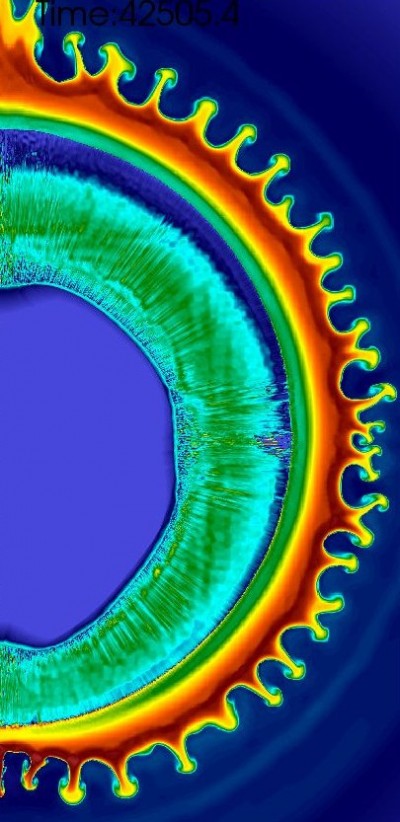10 February 2014
There are one hundred billion stars in the Milky Way, but which one is the oldest?
A team of astronomers, led by the Australian National University (ANU), has discovered the oldest known star in the universe, which formed shortly after the Big Bang more than 13 billion years ago.
The discovery, detailed today inNature, has allowed astronomers for the first time to study more directly than ever before the chemical fingerprint of the first stars, giving scientists a clearer idea of what the universe was like in its infancy.
The evolution of stars is learned from information about their physical properties. The composition of the newly discovered star shows it formed in the wake of a primordial star, which could have had a mass 60 times that of the Sun.
The Sun is a mixture of hydrogen and helium from the Big Bang, some oxygen, carbon, and nitrogen, and an enormous amount of iron – the equivalent of about 1,000 times the Earth’s mass. But the composition of the ancient star was vastly different – showing signs of pollution with lighter elements such as carbon, magnesium, and calcium, but no sign of pollution with iron.
Co-author on the paper Professor Alexander Heger, from Monash University’s School of Mathematical Sciences, said the stark contrast in composition revealed a lot about the nature of the first stars and how they died.
He said the results were striking because prior to this, it was thought that primordial stars died in extremely violent explosions, which polluted huge volumes of space with iron, and that calcium was made along with the iron.
This indicates the primordial star’s supernova explosion was of surprisingly low energy. Although sufficient to disintegrate a huge primordial star, almost all of the heavy elements such as iron, were consumed by a black hole that formed at the heart of the explosion, and that the calcium was not made in the explosion. It is uniquely made in a process that is only seen in the first stars.
“We’ve discovered the most iron-poor star known to date, which likely makes it the oldest star we know, and a star that uniquely shows the signature of very first generations of stars that formed in the universe,” Professor Heger said.
“Due to its low iron abundance, it also shows a unique pattern of elements that tells us how the very first stars made the first heavy elements in a way that has never been seen before. My contribution was to identify this unique abundance pattern, where it came from, and how it is made.
“This is a unique discovery that will improve our knowledge of the early universe and the epoch of the first stars, between the big bang and the formation of the first galaxies.
“Interestingly, we can trace back some of the calcium in our teeth to the first stars; it is older than the oldest galaxies and the supermassive black holes in their centres; older than any piece of gold or iron.”
The star was discovered using the ANU SkyMapper telescope at the Siding Spring Observatory, which is searching for ancient stars as it conducts a five-year project to produce the first digital map the southern sky. The ancient star is around 6,000 light years from Earth, which is relatively close in astronomical terms.















